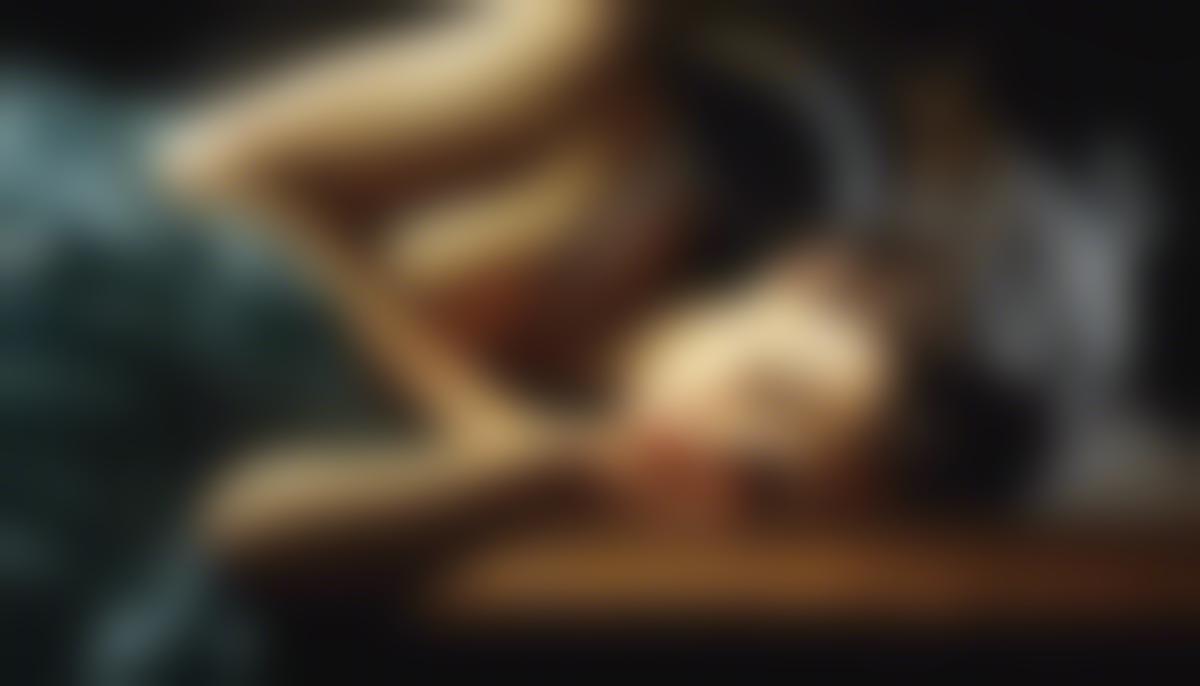The world of dreams offers a vast landscape of enigmatic symbols and perplexing scenarios that, despite their surreal nature, hold the power to echo our deepest fears and inherent conflicts. When we cross the threshold into the curious narrative of dreaming about eating glass, we are invited into a realm that is wrought with painful and jarring imagery, often leading to a desperate quest for meaning within the chaos of our subconscious mind. Endeavoring to dissect such a controversial topic, our essay embarks on a psychological journey, guided by the seminal works of Freud and Jung, to interpret the hidden messages lying within the glass-eating dreams. This exploration is not merely academic; it becomes a mirror reflecting the convoluted psyche of the dreamer, offering insights into the labyrinth of their emotions and the impact of such dreams on their waking reality.
Psychological Interpretation of Dreaming about Eating Glass
Psychoanalytic Interpretation of Ingesting Glass in Dreams
From the realm of oneiric imagery, the occurrence of dreaming about ingesting glass emerges as a particularly jarring and disquieting motif worthy of rigorous psychoanalytic scrutiny. As an archetypal material, glass represents a confluence of fragility and strength, transparency and opacity, rendering it a fecund subject for subconscious exploration within the nocturnal theatre of the mind.
At the forefront of dream interpretation, such a dream may symbolize a multitude of psychological states or processes. On the most accessible level, the act of eating glass could embody the individual’s perceptions regarding situations that are emotionally precarious or self-destructive. It is here at this pass, one must consider the inherent contradictions embodied in the material of glass itself—simultaneously fragile and capable of inflicting harm.
Venturing deeper into the metaphorical landscape, the ingestion of glass may also represent an internalization of pain or distress. This could be illustrative of a phase wherein the dreamer subconsciously grapples with experiences or emotions that are perceived to be detrimental to one’s integral well-being, much akin to the consumption of a harmful substance.
Additionally, this daunting dream symbol can be dissected through the lens of internal conflict. Glass, transparent yet unmistakably a barrier, when consumed, may imply the subconscious merging of conflicting aspects of the individual’s psyche. Such dream imagery might emerge during times when the conscious self is negating or suppressing aspects of the unconscious mind—akin to swallowing pieces that resist assimilation, but inevitably require acknowledgement and integration for psychological wholeness.
Moreover, the dreamer’s response to this problematic consumption within the dream narrative provides significant insights. A calm reaction might suggest a level of resignation or desensitization to burgeoning internal strife. In opposition, a visceral or panicked response might signify acute awareness of and resistance to harmful external influences or internal thoughts.
In the evaluation of these dreams, one must factor in the role of cognitive and emotional processes, woven intricately with the fabrics of personal significance and collective symbolism. It should be stressed, each interpretation resides heavily on the individual’s life context, personal history, and unique psychological makeup, necessitating an exceedingly personalized understanding of the dream content.
Conclusively, while the thought of ingesting glass may hold inherent discomfort, the dreamscape offers a sanctuary for working through subterranean struggles, providing invaluable reflections of one’s mental and emotional estate. In essence, such a dream may not signify a cause for alarm, but rather, an invitation to peer into the subconscious, confront the personal shards of existence, and undertake the painstaking work of psychological mending and growth.

Physiological Responses to Dreams Involving Glass Consumption
The Psychophysiological Response of the Human Body to Nocturnal Imagery Involving the Ingestion of Glass
Abstract: Distressing dreams, particularly those involving the consumption of glass, present a profound area of inquiry within the realm of sleep studies and psychophysiology. Beyond the symbolic and interpretative work traditionally associated with such dreams, it is of material significance to examine the acute bodily responses that accompany the experience of distress in the dream state. This exploration delineates the physiological and neurological mechanisms activated during distressing dreams and elucidates the implications of such responses for the understanding of the human body’s integral connections between physiological and psychological processes during sleep.
The lytic boundary of sleep and wakefulness occasionally becomes permeable when distressing dreams, such as those entailing the consumption of glass, evoke a response from the body’s systems. As an individual ensconced in such a dream, the autonomic nervous system often engages in a manner akin to real-time stress responses, despite the individual’s dormant state. Adrenaline release, heart rate acceleration, and heightened blood pressure are common indications of the sympathetic nervous system’s activation, reflecting a state of physiological distress that corresponds to the psychological turmoil experienced within the dream.
Concomitantly, research indicates that activity within the limbic system, particularly in regions such as the amygdala and the hippocampus, is increased. These structures, instrumental for emotions and memory processing, suggest that the body does not discriminate between actual and envisioned threats. Accordingly, cortisol, a stress hormone, may be secreted in elevated levels, further corroborating the experiential equivalence of distress regardless of its origin in reality or dreamscape.
Dreams involving the oral consumption of such a dangerous object as glass can lead to motor responses during the REM (Rapid Eye Movement) stage of sleep, where dreams are typically most vivid. Galvanic skin response and muscle twitches—often measured in sleep laboratories—may provide empirical evidence of the body’s reaction to the dream content. Such physiological signs prevail despite the general muscle atonia that characterizes REM sleep, aiming to prevent enactment of dreams.
The neurobiological underpinnings of these phenomena are mediated through intricate neural pathways, with neurotransmitters such as acetylcholine playing pivotal roles during REM sleep. Yet, the distressing content of dreams appears to enact a biochemical loop, where the distress itself could disrupt the architecture of sleep, precipitating awakenings and transitions between sleep stages; hence altering the typical patterns of sleep and potentially leading to sleep fragmentation.
Furthermore, consequences of these acute responses can manifest in diurnal life, influencing both mood and function. Chronic experience of distressing dreams may bear implications for mental health, potentially marking or exacerbating conditions such as anxiety or depression, where the boundaries between subconscious distress and conscious experiences are not firmly delineated.
In conclusion, the occurrence of distressing dreams involving the ingestion of glass is not merely a nocturnal oddity of the psyche but rather a tangible demonstration of the interaction between mind and body. Understanding these responses provides an insightful window into the comprehensive approach necessary for addressing both the physical and psychological health of individuals encountering such distressing nocturnal experiences. Such knowledge might pave the way for therapeutic interventions that holistically consider the sleep experience and its wider impact on human well-being.

Therapeutic Approaches to Disturbing Dreams
Therapeutic Approaches for Alleviating Distress Caused by Dreams of Ingesting Glass
Therapeutic strategies must be carefully selected when addressing the profound distress suffered by individuals who experience dreams involving the consumption of glass, a particularly distressing and potentially traumatizing scenario within the dream world. These therapeutic modalities must be as multifaceted as the complexities of the human psyche and approach the individual from a holistic standpoint, spanning the gamut from psychotherapeutic interventions to psychopharmacology, and possibly including alternative and complementary techniques.
Cognitive-Behavioral Therapy (CBT), particularly when tailored for the treatment of nightmares, often designated as Imagery Rehearsal Therapy (IRT), has shown considerable promise in alleviating the frequency and intensity of disturbing dreams. Through IRT, individuals are empowered to reimagine their unsettling dreams with a more positive or neutral outcome, which is thought to recalibrate the neural pathways associated with the dream content, thus fostering a sense of mastery and control over their dream experiences.
Exposure, Relaxation, and Rescripting Therapy (ERRT), a variant of CBT, is another intervention that specializes in the processing of traumatic dreams by instructing individuals in relaxation techniques, and progressively exposing them to the distressing content in a controlled and supportive environment with the aim to rewrite the narrative of the dreams.
Psychodynamic and analytical approaches may be particularly auspicious for those with dreams of ingesting glass, considering the symbolic nature of the imagery. By exploring the unconscious content and potential repressed emotions that manifest through these dreams, individuals may discover underlying emotional disturbances relation to such dreams, enabling a thorough exploration and integration of these troubling psychic elements.
Furthermore, Mindfulness-based stress reduction (MBSR) and other meditative practices could be of significant benefit, fostering an increased awareness and acceptance of thoughts and feelings, including those that manifest in dreams. This mindfulness approach may soften the acute distress and facilitate a more detached observation of the dream content, lessening the emotional impact upon waking.
Adjunctive to psychological therapies, certain pharmacological agents, like Prazosin, may ameliorate dream distress. Prazosin is known to reduce the occurrence of nightmares in individuals with PTSD by affecting the adrenergic system, though its use in the context of non-PTSD related disturbing dreams requires further empirical scrutiny.
Supplemental strategies, such as sleep hygiene education, could also provide a foundation for improvements by promoting quality and continuity of sleep, which has the potential to reduce the occurrence of distressing dreams by minimizing sleep disruptions known to provoke or exacerbate troubling dream content.
In tandem with these approaches, it is imperative to ensure a transdisciplinary coordination of care, encompassing the input of sleep specialists, psychologists, psychiatrists, and potentially other allied health professionals to address any concomitant sleep disorders or underlying mental health conditions.
Efficacy of treatment needs to be evaluated on a case-by-case basis, holding in esteem the individual’s subjective dream experiences and personal narratives. Therapeutic success is often reflected not only in a quantitative decline of distressing dreams of eating glass but in a restored sense of well-being and overall mental health. Therefore, the paramount goal remains to provide a compassionate, scientifically-grounded, and tailored therapeutic approach to each individual troubled by these unsettling nocturnal phenomena.

As we reflect upon the intricate tapestry woven by our unconscious mind, the symbolism of eating glass in our dreams unravels myriad layers of psychological and physiological significance. This diaphanous divide between our dreams and reality challenges us to reconceptualize the experiences that haunt our slumber. Through diverse therapeutic approaches, from the structured pathways of cognitive-behavioral therapy to the reflective practice of dream journaling, we find solace and solutions to mitigate the distress caused by such perturbing nocturnal visions. Ultimately, by confronting and understanding these intense dream experiences, we arm ourselves with the knowledge and tools necessary to restore equanimity both in our dream world and our waking life — a testimony to the resilience of the human spirit in its unending quest for psychological equilibrium and well-being.








